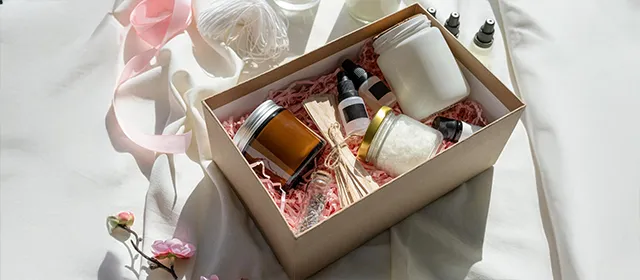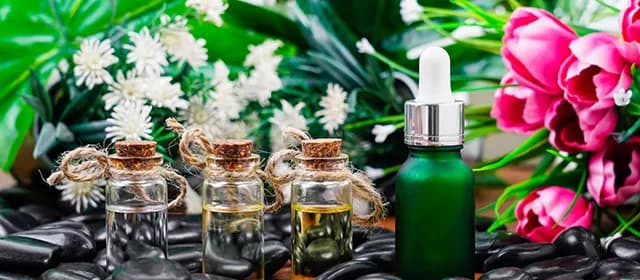Beauty consumers increasingly demand products that align with ethical, environmental, and health standards. Clean beauty, which emphasizes ingredient transparency, sustainable sourcing, cruelty-free practices, and avoidance of certain chemicals, responds to this demand. Subscription boxes provide a compelling channel for clean beauty discovery, curation, and education.
Kings Research estimates that the global beauty subscription box market size was valued at USD 966.2 million in 2023 and is projected to grow from USD 1,103.4 million in 2024 to USD 3,183.9 million by 2031, exhibiting a CAGR of 16.35% over the forecast period. This article examines the rise of clean beauty subscription boxes, how they respond to consumer expectations, operational challenges, and future potential.
What is Driving the Growth of Clean Beauty Subscription Boxes?
Consumers now treat beauty as an extension of lifestyle values. Surveys and market trends indicate growing sensitivity to ingredient safety, ethical sourcing, and environmental impact. The U.S. Cosmetics Regulatory Modernization Act (MoCRA, passed in 2022) expanded the Food and Drug Administration’s authority over cosmetics, including mandatory recall power and requirements around safety, labeling, and record keeping, elevating accountability in the industry.
Concerns about chemical ingredient safety remain salient. Recent reviews underscore the toxicological risks of many cosmetic ingredients on human health. Clean beauty subscription boxes position themselves as filters in a complex product space, providing value through vetting, education, and curation that appeal to time-constrained, values-driven consumers.
The base beauty industry also supports the growth of subscription models. The personal care and cosmetics sector in the U.S. provided 4.6 million direct and indirect jobs in 2022 and contributed $308.7 billion to GDP, highlighting the economic scale of the category (Source: personalcarecouncil.org). Subscription boxes provide a pathway into recurring revenue models within this large industry.
How Clean Beauty Subscription Models Operate
Clean beauty subscription services function on three pillars: ingredient assurance, curated discovery, and community engagement. Curators evaluate brands on ingredient safety, third-party certifications, ethical sourcing, and transparency. Some boxes demand full ingredient disclosure and avoid synthetic fragrances or controversial chemical classes.
Discovery is central. Subscribers receive samples or full-size products tailored to skin type, concerns, or seasonal needs. This model helps small or mission-driven brands reach audiences without bearing the full burden of marketing and distribution.
Community engagement and education distinguish clean boxes from generic ones. Boxes often include acceptance of ingredient rationales, sourcing stories, usage guides, and access to feedback loops or social platforms. This transparency builds trust and deepens consumer-brand relationships.
Operationally, clean beauty subscription boxes require robust vetting workflows, supply chain management for niche or small-batch brands, inventory forecasting, packaging sustainability, and customer feedback integration. Because clean brands may produce in smaller volumes, managing supply variability poses a challenge.
Challenges and Risks in Clean Beauty Subscription Models
Ingredient greenwashing presents a significant hurdle. Some subscription boxes market products as “clean” without systematic evaluation. Investigative reviews have noted discrepancies in how “clean” claims align with ingredient safety data across popular subscription boxes (Source: ewg.org).
Regulatory ambiguity complicates differentiation. Although MoCRA strengthens oversight, many definitions of “clean” lie outside regulatory definitions. Companies must build internal frameworks and transparency standards to maintain trust.
Sourcing constraints and supply chain disruption introduce risk. Clean and niche brands may struggle to scale or maintain consistent supply. Inventory delays, formula changes, or ingredient substitutions can erode the reliability of curated boxes.
Packaging sustainability matters. Clean beauty subscribers expect recyclable, compostable, or refillable packaging options. Subscription box logistics must optimize packaging for low waste, low shipment footprint, and brand alignment.
Maintaining subscriber retention is difficult. Beauty fatigue or dissatisfaction with sample selection can prompt churn. Deep personalization and feedback loops are essential to keep boxes relevant and valued.
Which Brands are Leading Clean Beauty Subscription Boxes?
Kinder Beauty launched a cruelty-free subscription box in February 2023 that delivers a curated set of vegan and sustainable products monthly. The brand also launched a skincare line tied to its subscription community.
Beauty Heroes curates clean beauty boxes that include 2 to 4 full-size products vetted for ethical and sustainable practices. Subscribers receive detailed ingredient and brand transparency in each box. Their offering emphasizes quality over quantity and transparent curation.
Large legacy subscription players are adapting. Birchbox, after acquisition by FemTec Health, committed to stricter ingredient curation and replacement of non-clean products in its boxes. This aims to reposition Birchbox toward clean and health-forward consumers. Smaller boutique boxes, such as The Clean Beauty Box (bi-monthly deliveries), emphasize minimalism, cruelty-free certification, and ingredient vetting.
Future Prospects and Evolution
Advances in data analytics and AI promise improved personalization. Matching subscriber skin type, climate, ingredient sensitivities, and past behavior allows tailoring product sets more effectively. Recommendation engines may reduce churn and improve perceived value.
Expansion into regional or local variants could address sourcing or shipping costs. Having localized clean beauty boxes catering to regional ingredient availability or climatic conditions may increase relevance and reduce carbon footprint. Strategic partnerships offer growth pathways. Subscription platforms may partner with clean beauty incubators, sustainable packaging firms, or regenerative supply networks to scale responsibly.
Platform integration with digital beauty services (skin analysis, AR try-ons, ingredient scanning apps) can create synergy between virtual diagnostics and physical product sampling. Regulatory clarity and certification standardization will strengthen consumer trust. As governments tighten cosmetics regulation, subscription boxes that proactively adopt rigorous standards will enjoy differentiation.
Conclusion
Clean beauty subscription boxes represent a convergence between value-driven consumer demand and subscription-based commerce. They provide discovery, vetting, transparency, and engagement in a domain fraught with complexity. Success hinges on credible ingredient standards, supply chain resilience, personalization, and sustainable operations. Brands such as Kinder Beauty, Beauty Heroes, Clean Beauty Kit, and Birchbox’s pivot illustrate various approaches to this segment. Rising regulation offers both risk and opportunity for subscription boxes that can meet higher safety, labeling, and accountability standards. The future of clean beauty subscription models may lie in deeper personalization, localized curation, hybrid offerings, and sustainable design. When executed carefully, clean beauty subscription boxes can serve as trusted bridges between conscious consumers and brands aligned with health, environment, and ethical values.




